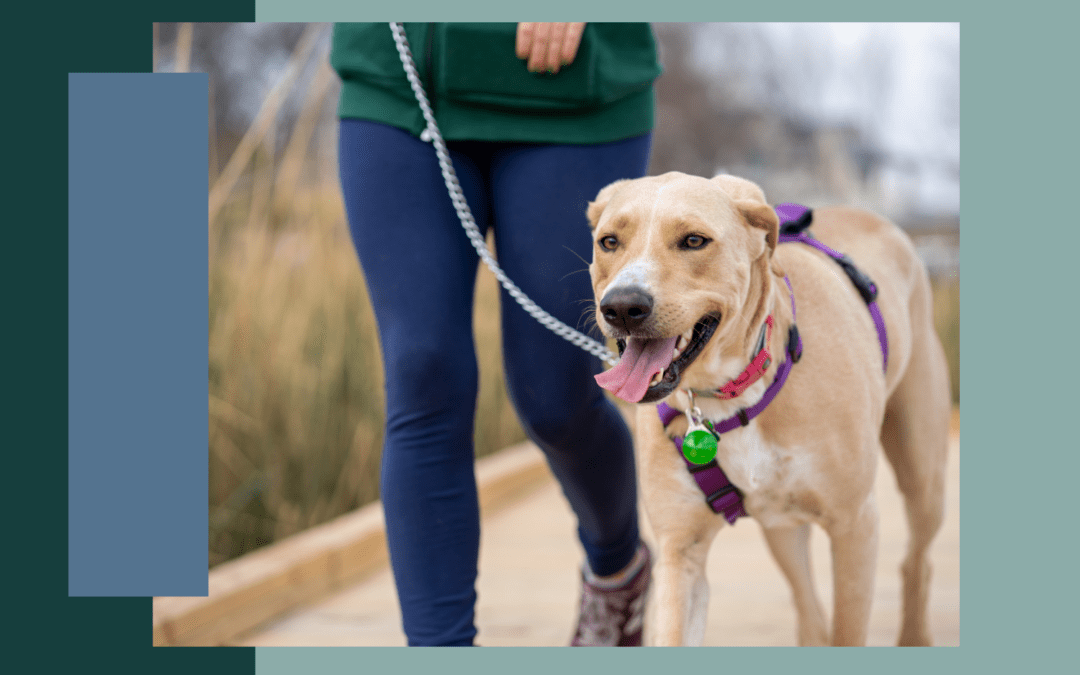Leash walking is a fundamental aspect of dog training that not only provides physical exercise but also strengthens the bond between you and your canine companion. A well-leashed walk can be a pleasant experience for both you and your dog, but it requires some practice and patience. Here are five essential tips to ensure successful and enjoyable leash walking:
1. Use the Right Equipment
The right leash and harness or collar are crucial for effective leash walking:
- Leash: Choose a sturdy, comfortable leash that’s approximately 4-6 feet long. Avoid retractable leashes, as they can encourage pulling and reduce control.
- Harness or Collar: For better control and comfort, use a gentle leader, especially for dogs prone to pulling. It gently guides the head down as they pull. Front-clip harnesses can be effective for discouraging pulling, while traditional collars can be used for dogs that walk well on a leash.
2. Start with Basic Training
Basic training sets the foundation for successful leash walking:
- Loose Leash Walking: Teach your dog to walk on a loose leash by rewarding them when they walk beside you without pulling. Use treats and praise to reinforce this behavior.
- “Heel” Command: Train your dog to follow a “heel” command, guiding them to walk closely by your side. Practice this command both indoors and outdoors before moving to more distracting environments.
3. Set a Consistent Pace
Maintaining a consistent pace helps your dog understand the walking routine:
- Establish a Routine: Start your walks at a steady, moderate pace. Avoid sudden stops or starts, which can confuse your dog and disrupt their walking rhythm.
- Encourage Focus: If your dog starts to pull or get distracted, gently guide them back to your side and continue walking at a steady pace. Reinforce good behavior with treats and praise.
4. Manage Distractions Effectively
Distractions can make leash walking challenging, but with proper management, you can keep your dog focused:
- Gradual Exposure: Start walking in quieter areas with fewer distractions. Gradually increase the level of distraction as your dog becomes more confident and well-behaved on the leash.
- Redirect Attention: Use treats or toys to redirect your dog’s attention if they become fixated on other animals or objects. Reward them for maintaining focus on you.
5. Practice Regularly and Be Patient
Consistency and patience are key to successful leash walking:
- Frequent Walks: Walk your dog regularly to reinforce good behavior and maintain their training. Frequent practice helps your dog learn and adapt to leash walking more effectively.
- Positive Reinforcement: Be patient and consistent with your training. Reward your dog for good behavior and avoid punishment for mistakes. Positive reinforcement helps build trust and encourages your dog to walk nicely on the leash.
Conclusion
Leash walking is a valuable skill that enhances your dog’s exercise routine and strengthens your bond. By using the right equipment, starting with basic training, maintaining a consistent pace, managing distractions effectively, and practicing regularly, you can ensure that walks are enjoyable and productive for both you and your dog. Remember, patience and consistency are key to developing a well-behaved walking partner. With these tips, you’ll create positive walking experiences that contribute to a happier, healthier, and better-behaved canine companion.

